Australian pricing and equipment for the new Audi TTS has just been confirmed. Powered by a 200kW/350Nm 2.0 TFSI engine, pricing for the 6 speed manual TTS Coupe (pictured top) starts at $92,000 and $97,100 for the TTS Roadster. Add another $3600 to those prices for the double clutch S tronic option. The TTS also gets a revised body kit and the front end treatment, especially, has been executed to near perfection. It looks fantastic—simultaneously agressive and understated. Classic Audi.
The beefed up engine takes an S tronic equipped 1395kg TTS Coupe from 0-100km/h in 5.2 seconds, while a similarly specced Roadster at 1455kgs takes 5.4 seconds. Audi’s all wheel drive quattro system and advanced magnetic ride suspension should ensure the TTS harnesses that power for good.
Audi Australia’s managing director, Joerg Hofmann, is pleased with the addition of an S model to the TT range, “As with all Audi S models, the new TTS will be the sporty top model in its family. It not only looks more aggressive and dynamic, its performance is second-to-none and continues the success story of the brand which focuses on reducing consumption whilst maintaining performance,†Mr Hofmann said.
“The new Audi TT is not only bigger and bolder, it is also lighter and more efficient – the Audi TT is a sportscar you can drive without regret.â€
TTS Coupe 6-speed manual $92,900 rrp
TTS Coupe S tronic $96,500 rrp
TTS Roadster 6-speed manual $97,100 rrp
TTS Roadster S tronic $100,700 rrp
(The recommended retail prices are calculated with Luxury Car Tax of 25%. Audi Australia has announced it will cover the additional 8% of LCT should the legislation pass on or around 26 August 2008, and be applied retrospectively.)
TTS Coupe technical data (32kb PDF)
TTS Roadster technical data (32kb PDF)
A pretty hefty press document accompanied this release and I’m sure many readers will enjoy the snippets below. The press images are also of an very high quality, so enjoy the images below.
The two-litre TFSI: the perfect sport engine
The TFSI engine in the TTS takes the two petrol direct injection and turbo charging technologies from Audi and blends them to form a perfect partnership for a sports car. It is not only the 200 kW of output that makes the TFSI so scintillating, there is also its hefty pulling power – the maximum torque of 350 Nm is constantly on tap from 2,500 to 5,000 rpm.
Compared to the engine it was derived from, the two-litre power unit has been fundamentally re-engineered and uprated to ready it for operation in the TTS. Thanks to its excellent efficiency, the sporty-sounding TFSI has an average fuel consumption of just 8.0 litres of fuel per 100 kilometres in the Coupe when paired with the six-speed manual transmission, while the figure for the Roadster averages 8.2 l/100 km. The optional S tronic dual-clutch transmission brings these figures down to 7.9 l/100 km and 8.0 l/100 km respectively.
S tronic, which operates with six speeds and two clutches, changes gear at high load and engine speed in a fraction of a second. This, coupled with its dynamic starting performance, knocks two-tenths of a second off the sprint to 100 km/h for both the Coupe and Roadster. Virtually loss-free transfer of power to the road is the task of the standard-specification quattro permanent all-wheel drive, which enables the TTS to accelerate sooner and more reliably than its challengers. At the heart of this system is a hydraulic multi-plate clutch, which now works faster than ever thanks to a new pressure reservoir.
Audi magnetic ride: high-tech damping
The TTS rolls off the production line equipped with yet another high-tech module – the Audi magnetic ride adaptive damping system. Circulating inside its damper pistons is a special fluid containing minute magnetic particles. When electrical voltage is applied, the fluid’s flow properties change, altering the damping characteristics as well. The driver can choose between two mapped characteristics – Normal and Sport. Normal mode is designed for a well-balanced, comfortable ride, whereas in the Sport program the TTS harnesses all of the potential of its sport suspension – which lowers the body by 10 millimetres – to deliver uncompromisingly crisp handling.
Unbeatable: quattro drive
quattro permanent all-wheel drive, like S tronic, underscores the unique position of the TTS in the compact sports car segment. In both areas of technology, its competitors are unable to offer anything comparable.
The nerve centre of the quattro drive system, developed specially for transverse-mounted engines, is a multi-plate clutch that is electronically controlled and hydraulically actuated.
The clutch is located at the end of the propshaft, in front of the rear axle differential – an installed position that improves the axle load distribution. Inside is a package of plates, running in an oil bath, which can be pressed together by controlled hydraulic power. As this hydraulic pressure increases, the amount of torque diverted to the rear axle rises.
The clutch’s control unit permanently analyses the driving conditions using a wide range of data. If necessary, an electrically driven axial piston pump with five pistons almost instantaneously generates the oil pressure needed by the clutches to divert the drive torque almost entirely from the front to the rear wheels. Thanks to a pressure reservoir, this process is completed twice as fast as it used to be – in a matter of milliseconds. All important stages of the drive line have been reinforced, from the propshaft through the differentials to the drive shafts.
Again in the TTS, the quattro principle delivers the supreme capabilities that have become an Audi hallmark – greater traction, slip-free acceleration, dynamic driving, safety and directional stability, together making up Audi’s proverbial Vorsprung durch Technik. The TTS handles dynamically and with supreme stability in all weather conditions.
The chassis
The front suspension of the TTS, with a track of 1,555 millimetres, adheres to a design principle that has already proved highly effective: a McPherson structure with triangular lower wishbones. The pivot bearings, the subframe and the wishbones are made from aluminium. This measure has cut the unsprung weight of the transverse links alone by 2.5 kilograms. To increase the rigidity, the subframe is bolted to the body at six points.
The four-link rear suspension has a track width of 1,546 millimetres. Its design principle offers major benefits in terms of driving dynamics, because it separates the cushioning of longitudinal and transverse forces. The longitudinal links absorb the driveline and braking forces, and their relatively soft mounts permit good ride comfort. On the other hand, the three wishbones per wheel – the spring link, the upper wishbone and the tie rod – are attached very rigidly to the subframe, benefiting the handling characteristics.
All links are made from high-strength steel grades. Separate coil springs and dampers provide vertical support.
The Audi TTS comes as standard with 18-inch cast aluminium wheels that sport the five-arm parallel-spoke S design and are shod with 245/40-size tyres as standard.
The large wheels conceal high-performance sport brakes. The ventilated disks on the front wheels measure 340 millimetres in diameter and 310 mm at the rear. The brake callipers are painted black, with special TTS badges at the front. Their sport brake pads guarantee high friction.
The body
An unladen weight of just 1,395 kilograms for the manual TTS Coupe and 1,455 kilograms for the Roadster version – low weight is the bedrock of both TTS versions’ dazzling performance. The power-to-weight ratio of 5.1 kg/hp for the Coupe and 5.3 kg/hp for the Roadster is a fitting reflection of Audi’s expertise in sports car construction.
The key factor is the design of both body versions. In each case, the forward structure is made from lightweight aluminium components assembled with Audi Space Frame technology (ASF) – a principle with which the brand kicked off a revolution in vehicle manufacturing in the early 1990s. Extruded sections, pressure die-castings and load-bearing aluminium panels together form a light, extremely rigid and ultra-safe structure that offers good vibrational comfort. On the Coupe, the seam between the roof and the side sections is welded by laser – this “invisible joint†gives visible expression to the extremely high standards of precision embodied by the Audi brand.
By contrast, the rear section of the floor assembly, the doors and the rear lid of the TTS are made from steel. This gives the car a balance that harmonises perfectly with the quattro drive’s characteristics. 58 percent of the Coupe’s weight with manual transmission rests on the front wheels and 42 percent on the rear wheels.
Thanks to this hybrid design, the Coupe body shell weighs just 206 kilograms. This is comprised of 140 kilograms of aluminium (68 percent) and 66 kilograms of steel (32 percent); an all-steel structure would have weighed one and a half times as much. The body of the TTS Roadster weighs in at 251 kilograms; it incorporates special components such as the steel bulkhead behind the passenger compartment and intensively ribbed side sills.
In the event of a rollover, passengers are protected by the windshield frame, which is reinforced with a super-strength steel tube, and the two rigid rollover bars with aluminium trim. The Roadster and Coupe come complete with front airbags that are activated in two stages, depending on the severity of an accident.
The belt tensioners and belt force limiters protect the driver and passenger. In a rear-end collision, the Audi backguard system uses the head restraints to support the back of the head. Both cars are equipped with head/thorax side airbags for protection in the event of a side impact.
The TTS Coupe and Roadster are assembled at the Györ plant; the ready-painted bodies arrive by rail from Ingolstadt. Györ serves as the home plant of the TT – the first generation of this sports car went into production in the city in northwest Hungary back in 1998.
The exterior design
The redesigned headlights combine Bi-Xenon units with LED daytime running lights, a major safety innovation from Audi. The twelve white light-emitting diodes on each side are arranged in a straight line along the lower edge of the housing, combining with the plastic wings to give the brand an unmistakable design feature. The headlights are more than just lights – their design elevates them to the status of miniature technical works of art.
As on the TT, the spoiler of the TTS extends automatically at a speed of 120 km/h and is retracted again at 80 km/h; in conjunction with the smooth underbody, it reduces lift. The Coupe boasts a drag coefficient of 0.31 with a frontal area of 2.09 m2; the Roadster achieves cD = 0.33 (with the soft top up) with the same frontal area.
Both cars measure 4,198 millimetres in length and 1,842 millimetres in width. The Coupe version of the TTS stands 1,345 millimetres tall and the Roadster 1,350 millimetres.
Audi provides a choice of twelve body colours. The solid colours are Ibis White, Brilliant Red, Brilliant Black, Solar Orange and Imola Yellow. The metallic hues bear the names Ice Silver, Sahara Silver and Condor Grey, and the pearl effect paint finishes are Meteor Grey, Phantom Black, Deep Sea Blue and Sprint Blue. Solar Orange, Imola Yellow and Sprint Blue have been created exclusively for the TT range.
The TTS Roadster’s soft top is available in beige, black or dark grey. It incorporates a large, heated glass rear window and folds down in a Z-pattern when the roof is open, making a lid or tonneau cover unnecessary. An electro-hydraulic drive opens and closes the soft top in twelve seconds at the push of a button, even when on the move at speeds of less than 50 km/h. Additional matting between the headlining and outer skin provides outstanding soundproofing and thermal insulation, and an electrically extended and retracted wind deflector reduces draughts at neck level with the soft top open.
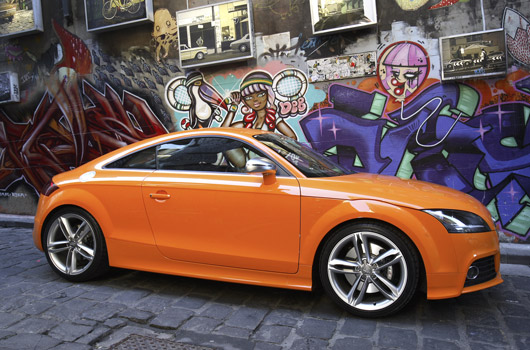
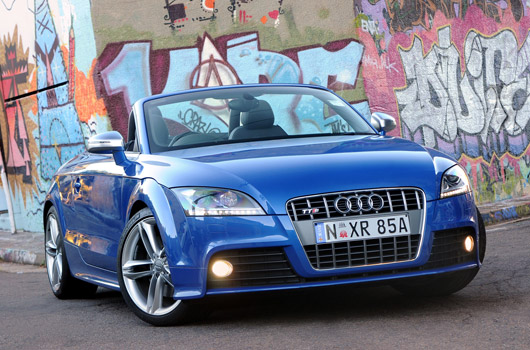
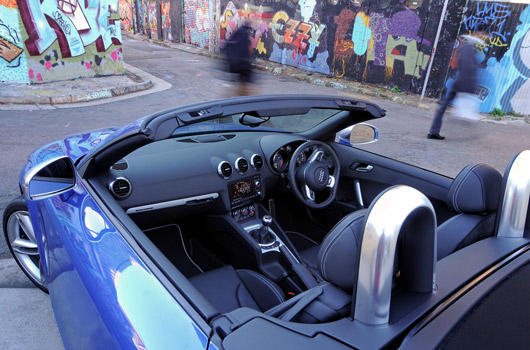
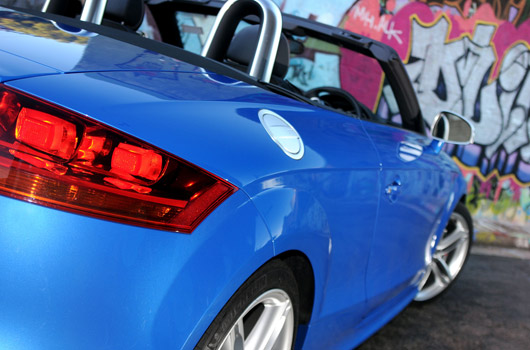
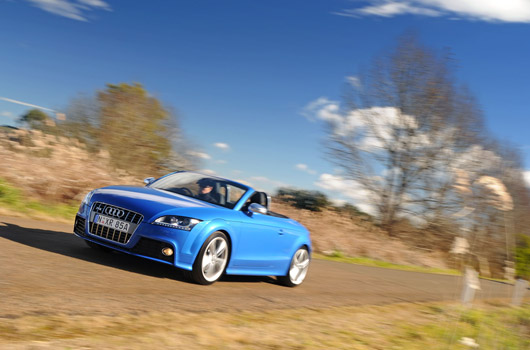

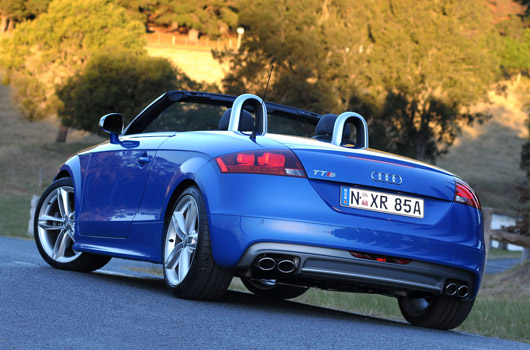
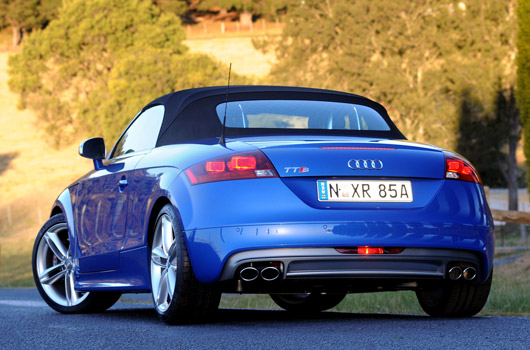
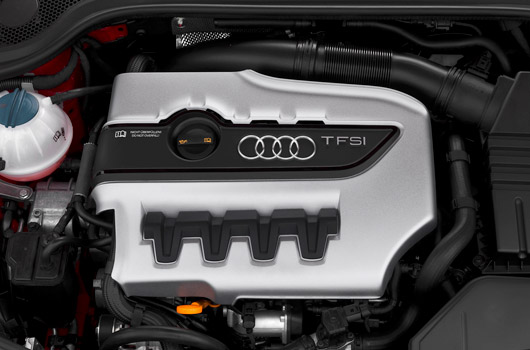
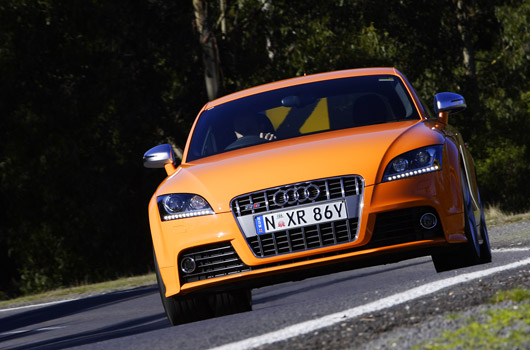
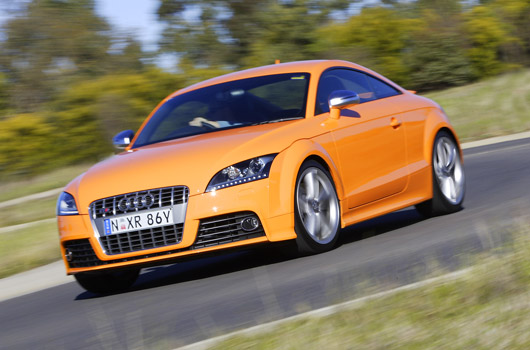
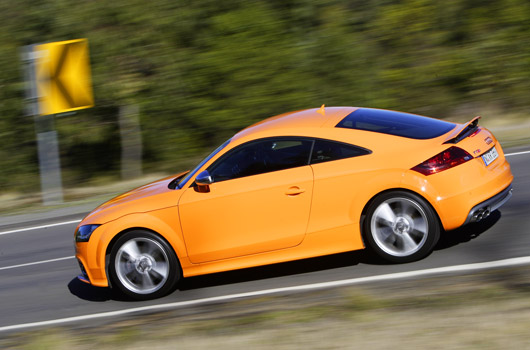
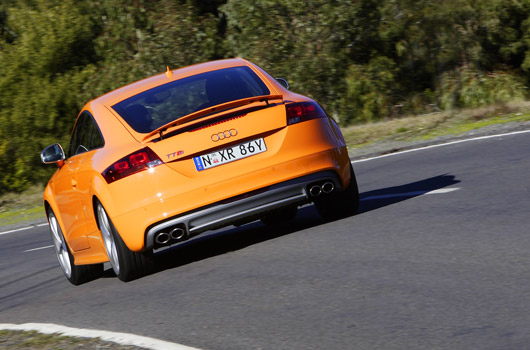
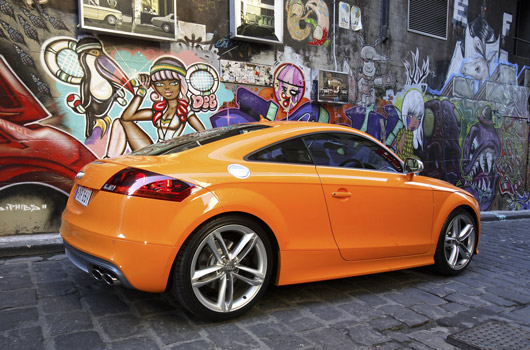
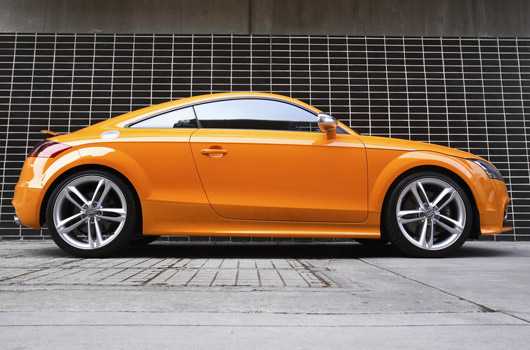

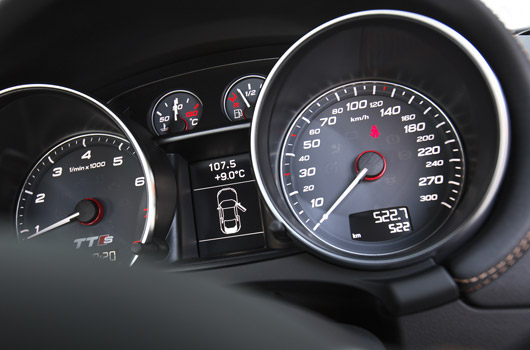
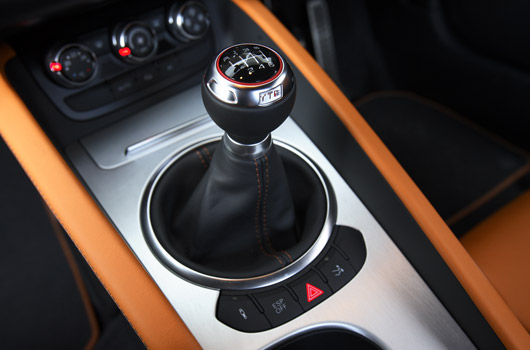
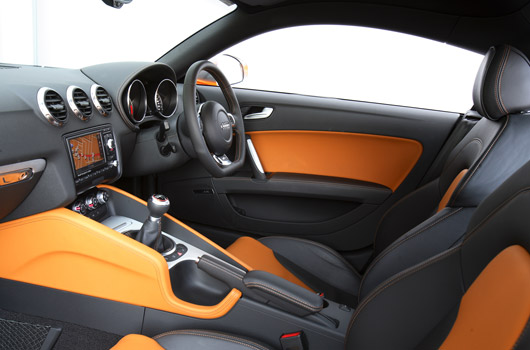
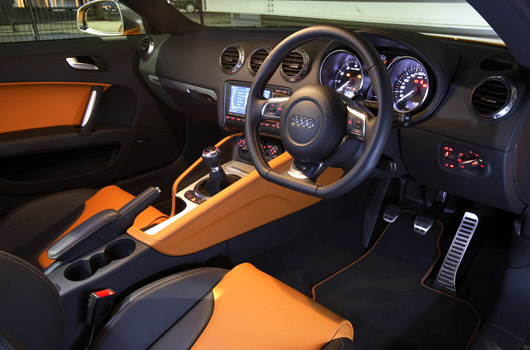
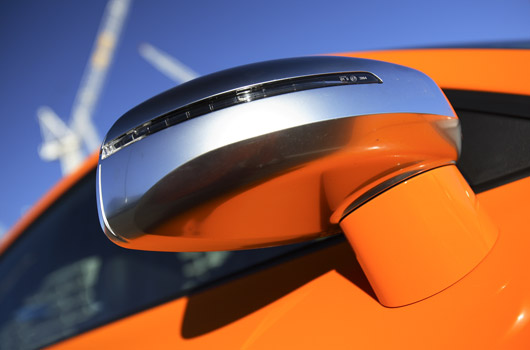
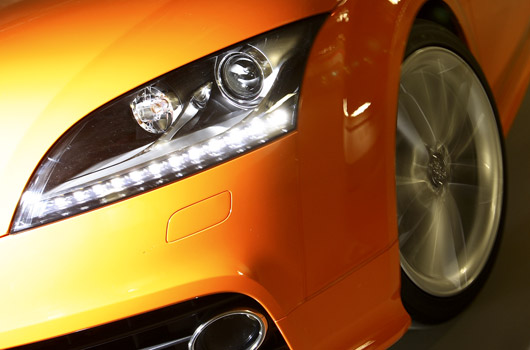
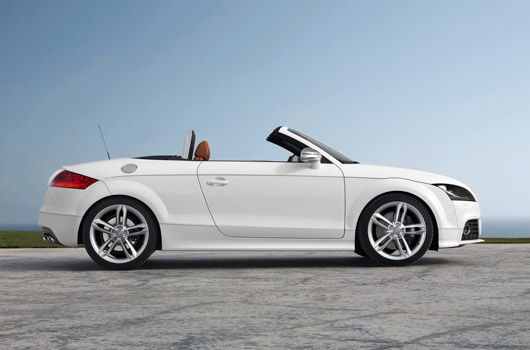
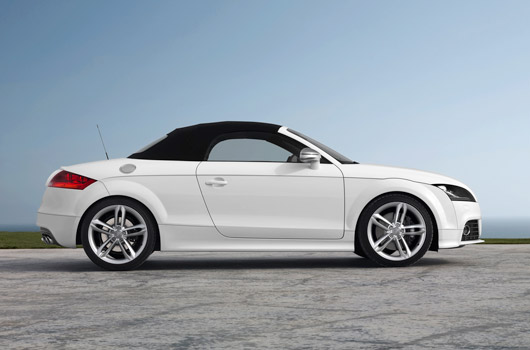
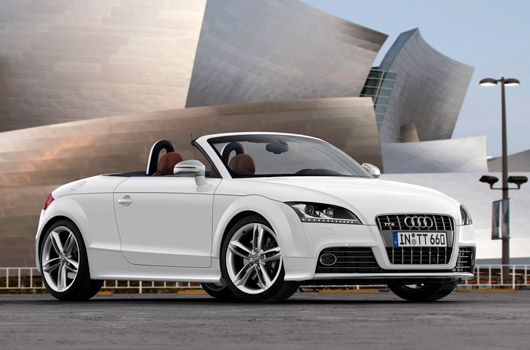
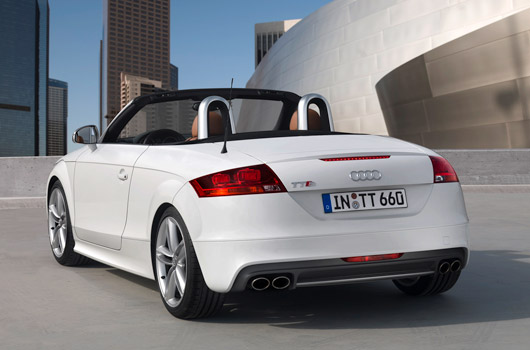
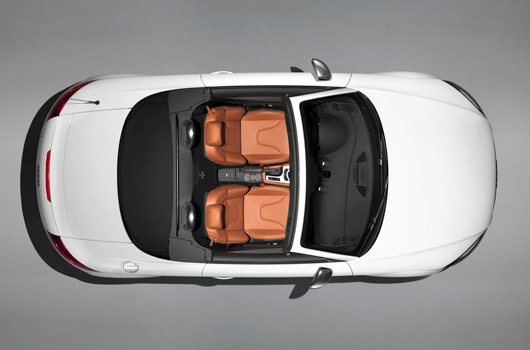
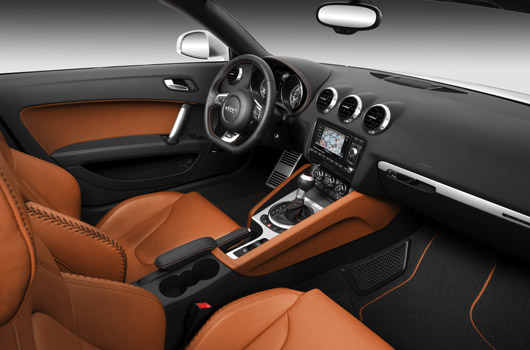
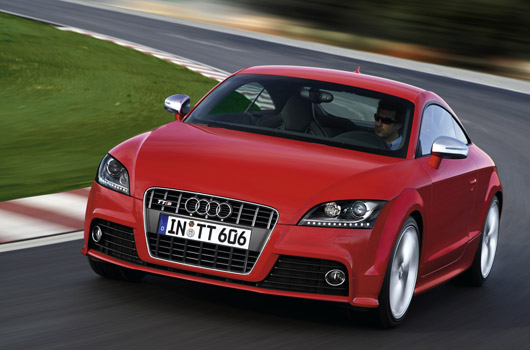
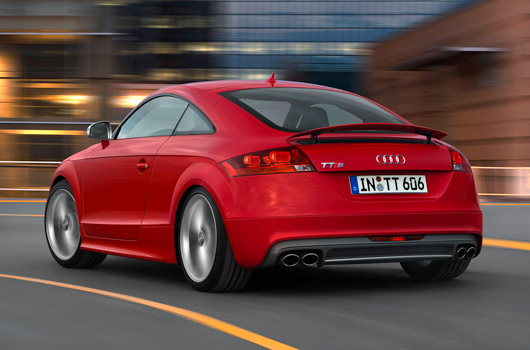

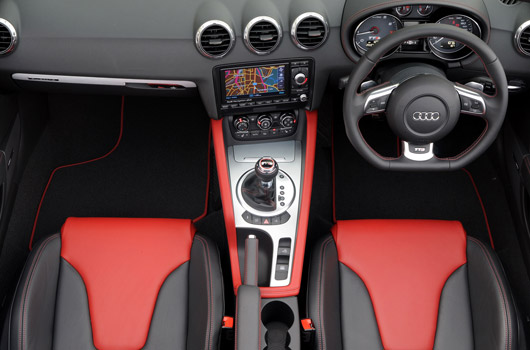
6 replies on “Audi TTS adds brawn to beauty”
Wow. Coupe looks very nice.
Still not really sure if it looks as good as the Z4M coupe.
I’d like a TTS body, with M3 running gear please?! 😛
You’re right. From some angles that TTS looks absolutely stunning!
Only heard the Audi/VW 2.0TFSI in VW GTI guise, not sure if it sounds any better with this version.
[…] video itself may not be the sharpest clip you’ll see, but these guys have driven the stunning Audi TTS and I […]
[…] on the lower edges of the front grille are the biggest visual clue separating the TT RS from the regular S model. There’s also a more aggressive rear […]
Interior of the TTS is a huge improvement on the Z4 M coupe though. Plus you get significantly cheaper running costs for the TTS with only a few 10ths slower (TTs has 10Nm more torque too). I drive an E46 M3 and would be tempted by this especially as they will be worth about 26k next year!!